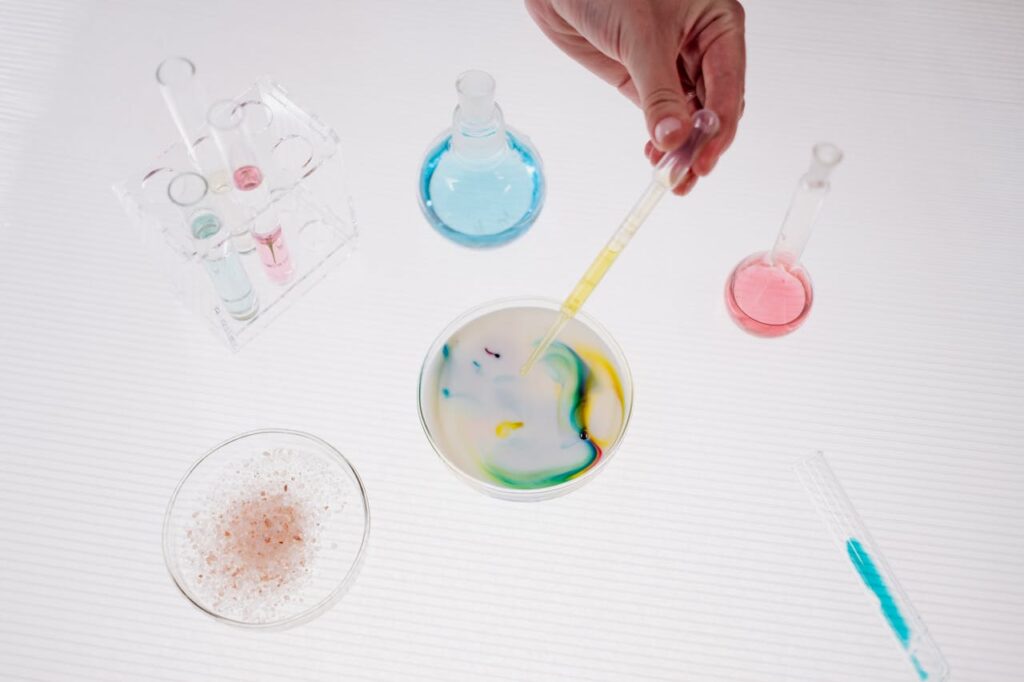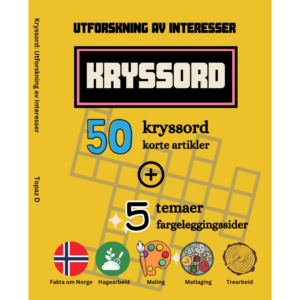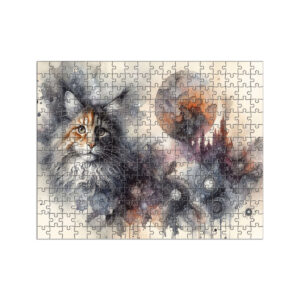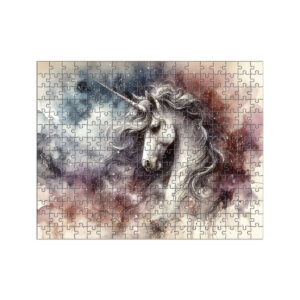
Explore & Play
Discover interesting topics and solve the accompanying crossword puzzle.
Mixture Crossword | How mixtures shape our daily lives
Table of Contents
Mixture Crossword
You can either fill in the crossword puzzle directly on this page or click the button in the bottom right corner to print it for free.

From Kitchen to Laboratory: The Fascinating World of Mixtures
Mixtures are the backbone of our everyday life, seamlessly bridging the gap between the ordinary and the extraordinary, from the meals we prepare in the kitchen to the groundbreaking experiments in scientific laboratories. Whether you’re blending ingredients for a hearty soup or studying the properties of alloys in a lab, mixtures form the basis of countless processes.
This article will explore the diverse and fascinating world of mixtures, covering their roles in cooking, construction, science, and beyond. To make it more interactive, we’ve created a crossword puzzle featuring key terms related to mixtures—perfect for testing your knowledge as you read along.
What Are Mixtures? Understanding the Basics
Mixtures are everywhere, both in nature and in our daily lives. At a basic level, a mixture is simply the combination of two or more substances where each component retains its individual properties. Unlike compounds, where elements chemically bond to form a new substance, the substances in a mixture can be separated by physical means. This makes mixtures versatile and easy to manipulate in various contexts.
Types of Mixtures
Mixtures can be classified into two main types: homogeneous and heterogeneous.
Homogeneous Mixtures: These are mixtures where the components are uniformly distributed. You can’t see the individual substances once they’re combined, making them look like a single substance. Examples include a solution like salt dissolved in water, where the salt disperses evenly throughout the water.
Heterogeneous Mixtures: In these mixtures, the different substances remain separate and can be seen. Think of suspensions, like muddy water, where particles are suspended within the liquid but settle over time, or salads, where you can distinguish between the vegetables and dressing.
Everyday Examples of Mixtures
Mixtures are present in countless everyday situations. For example, the beverage smoothie combines fruits, yogurt, and juice into a mixture. While the ingredients blend together, you can still taste each one distinctly. In cooking, sauces like marinara or gravy are mixtures of spices, liquids, and seasonings that, despite combining, maintain their unique properties. In science, air is a mixture of gases like nitrogen, oxygen, and trace gases, each maintaining its identity.
Mixtures in the Kitchen: Culinary Chemistry
The kitchen is a place where chemistry comes to life, and understanding mixtures can enhance how we prepare food. Whether you’re baking, cooking, or creating a beverage, mixtures are key to achieving the desired texture, flavor, and consistency.
Cooking Essentials: Solutions, Emulsions, and Suspensions
Some of the most basic cooking techniques involve working with different types of mixtures. Solutions are mixtures where one substance dissolves into another. A perfect example is when sugar dissolves in water to create a simple syrup. The sugar molecules disperse uniformly throughout the water, making it impossible to see them individually.
An emulsion occurs when two liquids that normally don’t mix, like oil and water, are forced together. Common examples include mayonnaise and vinaigrette. In these emulsions, egg yolks or mustard help bind the liquids, giving them a smooth texture that we can use in many dishes.
Suspensions are mixtures where particles are dispersed in a liquid but are not fully dissolved, meaning they eventually settle. This can be seen in soup stocks or smoothies, where bits of solid ingredients, like vegetables or fruits, float in the liquid base.
Dough, Batter, and More: Creating Textures in Baking
Baking relies heavily on mixtures to create the perfect texture. A dough typically combines flour, water, salt, and sometimes fat to create a sticky or firm texture that can be kneaded and shaped. The proteins in the flour, especially gluten, form strands that provide structure to the dough, allowing it to rise when baked.
On the other hand, a batter is a more liquid mixture used for cakes, pancakes, and fritters. The difference between dough and batter often lies in the ratio of dry ingredients to liquids. The process of mixing creates a smooth consistency that helps baked goods become light and airy.
Sauces, Soups, and Drinks: Liquid Mixtures in the Kitchen
Many culinary creations start with a liquid mixture, such as soups or smoothies. For example, a bechamel sauce (a type of white sauce) is made by combining milk, butter, and flour, forming a smooth and creamy mixture. Similarly, smoothies are made by blending fruits, yogurt, and juice into a creamy drink, which is another example of an emulsion.
Each type of mixture in the kitchen serves a specific purpose, whether it’s for flavor, texture, or appearance, demonstrating how essential understanding mixtures is for successful cooking.
Mixtures in Construction: Building Blocks of Modern Life
The field of construction, just like cooking, depends heavily on the use of mixtures to create strong, durable, and functional structures. These mixtures often involve substances that come together to form materials essential for building homes, bridges, roads, and more.
Cement, Mortar, and Concrete: The Foundations of Structures
Cement is one of the most widely used materials in construction. It’s created by mixing limestone, clay, and other materials in precise amounts, then heating them to form a fine powder. When water is added to this powder, it reacts chemically to form a solid mass, which hardens over time and serves as the foundation for most modern structures. The process of adding water to cement to create concrete is an example of a chemical mixture.
Mortar: Mortar is a mixture of cement, sand, and water, used primarily for binding bricks, stones, or blocks together. Unlike concrete, mortar doesn’t contain large aggregates like gravel, and its primary function is to hold building materials in place.
Concrete: Concrete is a versatile building material that combines cement with sand, gravel, and water. The mix ratio determines the strength and durability of the final product. Concrete is used for everything from foundations to roads, bridges, and skyscrapers. The mix of aggregate materials ensures that concrete is both strong and flexible, making it ideal for large-scale construction projects.
Grout, Plaster, and Asphalt: Perfecting the Finish
After the basic structure is in place, other mixtures are needed for finishing touches. Grout is a mixture of water, cement, and sand, and it’s often used to fill gaps between tiles, providing a smooth, solid surface. Similarly, plaster is used for coating walls and ceilings, giving them a smooth, finished appearance while also serving as a protective barrier against moisture.
Asphalt, made by mixing bitumen with gravel, sand, and other materials, is essential for road construction. The asphalt mixture is heated and then spread on the road surface, where it cools and hardens, creating a durable and smooth roadway.
In each of these cases, the mixture’s proportions are carefully calculated to achieve the right balance of durability, texture, and functionality, ensuring that the final product is fit for its purpose. Whether you’re building a home or paving a highway, the use of mixtures is fundamental to the process of construction.
Mixtures in Science and Industry
Mixtures play a crucial role in various scientific and industrial applications, shaping the technologies and products we rely on every day. Whether in chemical engineering, pharmaceuticals, or materials science, understanding how substances combine and interact is essential for innovation and development.
Chemical Engineering: The Art of Formulation
In chemical engineering, the creation of mixtures is at the heart of designing processes that produce everything from plastics to pharmaceuticals. A prime example of mixture use in chemical engineering is the creation of polymers—large molecules made by chemically bonding monomers together. Polymers are often produced in the form of a mixture, where raw materials are combined under controlled conditions to produce substances like plastic, rubber, and nylon. These polymers are incredibly versatile and are used in countless applications, from packaging to clothing.
Another example is the chemical reactions that take place in industry. For instance, the production of ammonia through the Haber process involves combining nitrogen and hydrogen gases under high pressure and temperature to form ammonia, a key ingredient in fertilizers. Understanding how gases and liquids combine and react is fundamental to making efficient and sustainable industrial processes.
Pharmaceuticals: Creating Life-Saving Mixtures
In the pharmaceutical industry, mixtures are used to create a wide range of medications and treatments. These mixtures can be liquids, solids, or even gases, and the precise combination of ingredients is essential for the effectiveness and safety of the final product. For example, syrups, such as cough syrup, are mixtures of active ingredients (like codeine or dextromethorphan) and excipients (like sugars or flavorings). These syrups are formulated to deliver the active ingredient in the most efficient and palatable form possible.
Another area where mixtures are important is in the creation of vaccines. Vaccines often consist of weakened or inactivated pathogens, which are mixed with other ingredients like preservatives, stabilizers, and adjuvants. The formulation of vaccines is a delicate balance, ensuring that the immune system is triggered without causing harm to the individual receiving the vaccine.
Materials Science: Alloys and Composites
Materials science is another area where mixtures are extensively used. Alloys—mixtures of metals—are created to combine the properties of different metals, resulting in a material that is stronger, more durable, or more heat-resistant than its individual components. For example, steel is an alloy made primarily of iron and carbon, and its strength makes it an essential material for construction, automotive, and manufacturing industries.
Composites are another type of mixture used in materials science. These are combinations of different materials, like fiberglass (a mixture of glass fibers and plastic), which provide superior strength-to-weight ratios and are used in everything from aerospace engineering to sports equipment.
In each of these industries, understanding the properties of mixtures allows for the development of new materials and products that can improve lives and drive technological advancement.
Mixtures in Nature: A World of Wonders
Nature is full of mixtures, and many of the processes that sustain life involve the blending of substances in fascinating ways. From the atmosphere we breathe to the food chains that sustain ecosystems, mixtures are essential components of the natural world.
Atmosphere: A Complex Mixture of Gases
The air we breathe is a mixture of gases, primarily nitrogen, oxygen, argon, and trace amounts of other gases, including carbon dioxide and water vapor. This mixture plays a critical role in sustaining life on Earth. Plants use carbon dioxide from the air during photosynthesis to produce oxygen, which animals, including humans, rely on for survival. The atmosphere also contains a mixture of aerosols and particulate matter, which influence weather patterns and climate.
The presence of water vapor in the atmosphere is also essential for the water cycle, as it leads to the formation of clouds, which ultimately produce precipitation, nourishing plants and replenishing water sources.
Soil: A Rich and Diverse Mixture of Organic and Inorganic Matter
Soil is another perfect example of a natural mixture, composed of a blend of organic matter (like decomposed plant and animal material), minerals, water, and air. The composition of soil varies widely depending on its location and the surrounding environment. Soils rich in organic material, like humus, are highly fertile and support plant growth by providing essential nutrients.
Soil also contains a mixture of microorganisms, such as bacteria, fungi, and other small organisms, which help break down organic matter and cycle nutrients back into the ecosystem. This biological mixture is key to maintaining the health of ecosystems and supporting plant and animal life.
Food Chains: Mixtures of Energy and Nutrients
At the heart of every ecosystem is the food chain, a series of interconnected organisms that rely on each other for energy and nutrients. The mixing of organic materials—from plants to herbivores to carnivores—forms a dynamic web of life, where energy flows and nutrients are recycled. The process of decomposition, where plants and animals break down into simpler substances, is an example of nature’s way of mixing matter and returning nutrients to the soil.
Artistic and Creative Uses of Mixtures
In the world of art and creativity, mixtures are used to bring ideas to life. From painting to sculpture to photography, artists rely on combinations of materials to express themselves and create works that move and inspire.
Painting: Blending Pigments to Create Masterpieces
One of the most well-known artistic uses of mixtures is in painting. Artists combine pigments (colored powders) with binders (like oil or acrylic mediums) to create paints that can be applied to canvas, wood, or other surfaces. The process of mixing different pigments allows artists to achieve a vast range of colors and tones, which can be manipulated for different effects, from realism to abstraction.
Artists also experiment with mixtures to create unique textures and effects. For example, impasto is a technique where thick layers of paint are applied to a canvas, creating a textured, almost sculptural surface. This involves mixing paint with mediums that increase the texture, such as wax or sand.
Sculpture: Combining Materials for Form and Structure
Sculptors frequently work with mixtures to create the right balance of strength, flexibility, and texture in their works. For instance, clay is a mixture of minerals and water that can be shaped and fired to form a durable piece of art. Similarly, bronze sculptures are made by mixing copper and tin to form an alloy that is durable and malleable.
Modern sculptors also use materials like concrete, resin, and even plastics, which are all types of mixtures that offer a variety of textures, finishes, and structural properties. By experimenting with different combinations of materials, artists can create sculptures that range from delicate and intricate to bold and imposing.
Photography and Film: Chemical Mixtures to Capture Moments
In traditional photography, the process of capturing images relies on chemical mixtures. Film is coated with a layer of light-sensitive chemicals, such as silver halide crystals, that react when exposed to light. After exposure, the film undergoes a development process, where it is treated with a series of chemical mixtures that reveal the captured image. Even today, although digital photography is dominant, the principles of light exposure and chemical processing still play a significant role in the art of capturing visual moments.
Film development also uses various chemical mixtures, including developers, stop baths, and fixers, to bring the images to life. These mixtures work together to ensure that the light captured on film is properly developed into a visible image.
Mixtures: The Hidden Heroes of Daily Life
From the kitchen to the laboratory, and from the garden to the construction site, mixtures are the essence of creation and innovation. They enrich our lives in ways we often overlook, blending science, art, and practicality.
Now, it’s your turn to explore the world of mixtures! Play the crossword puzzle and see how many of these terms you can remember. You might be surprised by how much you’ve learned. 😊
Share to...
I hope you enjoy the content.
Want to receive our daily crossword puzzle or article? Subscribe!
You may also be interested in
Share to…
Want to receive our daily crossword puzzle?
-
Jigsaw Puzzles
Maine Coon Cat Ink Wash Puzzle 250 | 300 | 500 Pieces
kr 348,00 – kr 439,00Price range: kr 348,00 through kr 439,00 Select options This product has multiple variants. The options may be chosen on the product page -
Jigsaw Puzzles
Norwegian Stave Church Abstract Jigsaw Puzzle 250 | 300 | 500 Pieces
kr 348,00 – kr 439,00Price range: kr 348,00 through kr 439,00 Select options This product has multiple variants. The options may be chosen on the product page -
Jigsaw Puzzles
Majestic Unicorn Watercolor Puzzle 250 | 300 | 500 Brikker
kr 348,00 – kr 439,00Price range: kr 348,00 through kr 439,00 Select options This product has multiple variants. The options may be chosen on the product page

















